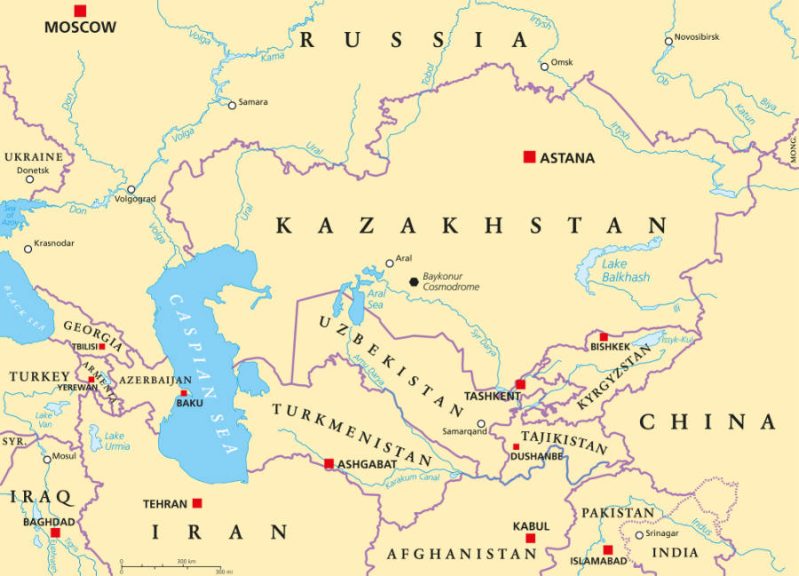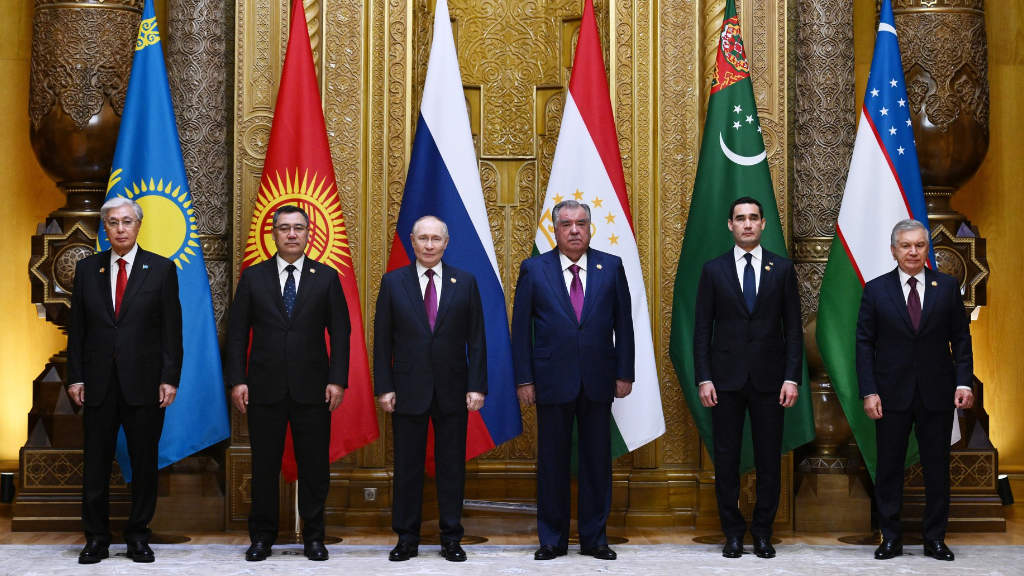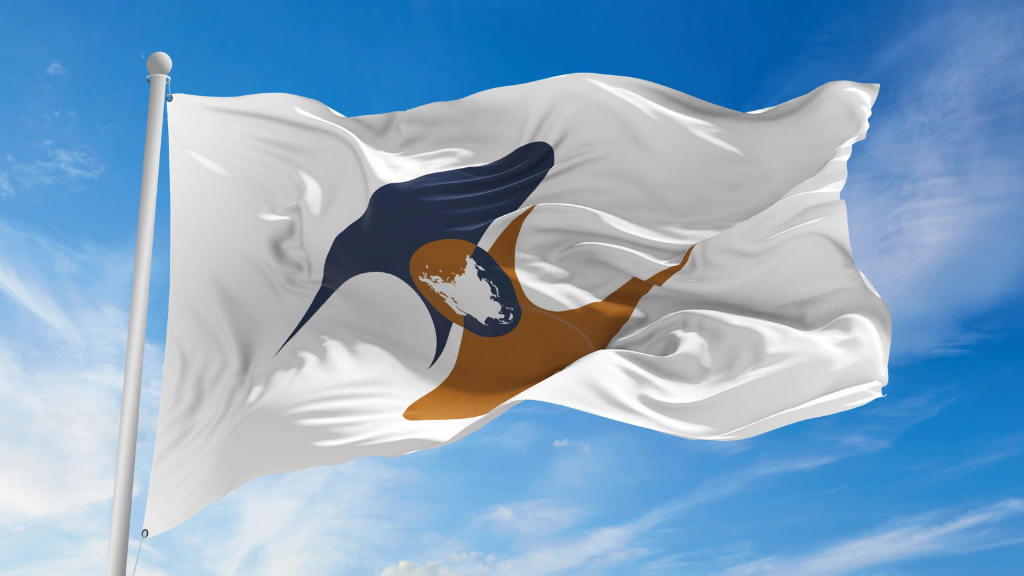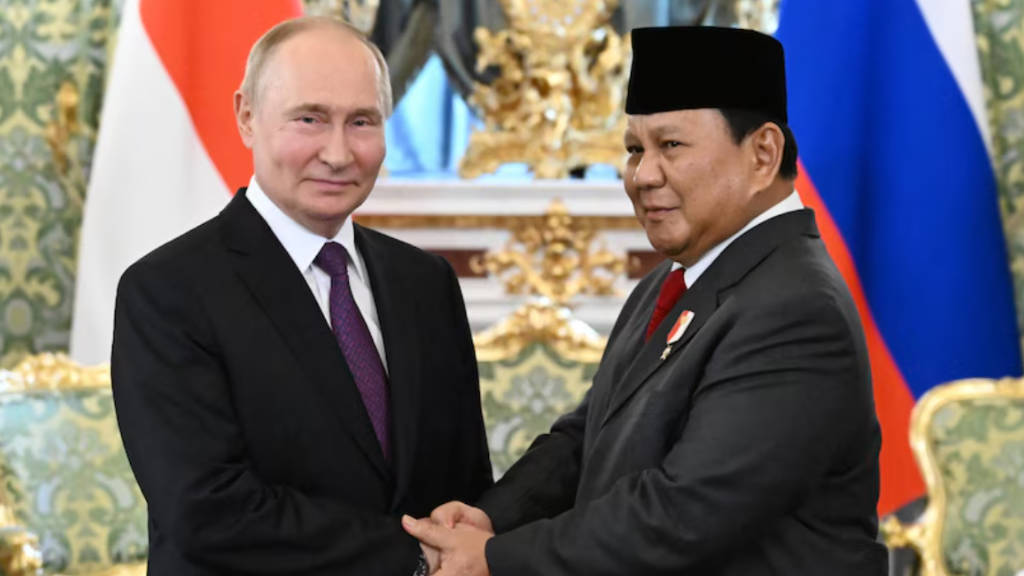The second Russia-Central Asia summit has been held in Dushanbe, Tajikistan. These discussions, which were held separately to the Commonwealth of Independent States summit, centred on expanding cooperation between Russia and the Central Asian states across a wide range of areas, including trade, economic, financial, industrial, logistics, and energy ties. Particular attention was paid to strengthening regional security as concerns the tense situations in Afghanistan and the Middle East. They also specifically touched on the situation with Iran, Israel, and Palestine.
Participating were Emomali Rahmon, the President of Tajikistan; Vladimir Putin, the President of Russia; Kassym-Jomart Tokayev, the President of Kazakhstan; Sadyr Japarov, the President of Kyrgyzstan; Serdar Berdimuhamedov, the President of Turkmenistan; and Shavkat Mirziyoyev, the President of Uzbekistan.
This is what President Putin had to say. We prefix his comments as VP; our comments are prefixed RPA:
VP: “Mr Rahmon, friends and colleagues,
Our entire delegation and I are delighted to see you all here. As President Rahmon has already noted, this is our second meeting in this format, following the first one in Astana, which was also held on the sidelines of a CIS summit.
Of course, we all remain in constant contact. I greatly value the dialogue I maintain with each of you, and I genuinely enjoy our conversations. We have a strong foundation of being able to consult one another and seek solutions to pressing issues. That said, I am sure you will agree that this more multifaceted format also offers its own distinct “added value.”
I would like to underscore that Russia is firmly committed to further strengthening the strategic partnership and alliance with your states, as well as deepening constructive political, economic, and cultural ties.
Significant progress has already been achieved in all these areas. For instance, last year’s trade between Russia and the Central Asian states, the five nations, exceeded US$45 billion. This is generally a good result. However, I would like to draw your attention – and I always cite this example in such cases –and tomorrow, Alexander Lukashenko will participate in our work within the CIS framework. With Belarus, our trade exceeds $50 billion. Let me remind you that Belarus has a population of 10 million, Uzbekistan nearly 40 million, Tajikistan over 10 million, and Kazakhstan more than 20 million. You can imagine what enormous potential this represents. This means there are also excellent prospects for advancing our economic relations.”
RPA: On a purely per capita basis, based on Russia’s trade with Belarus, this would imply that Russia’s trade with the five participating Central Asian countries has the potential to reach US$425 billion—about ten times more than the current volumes.
VP: In the seven months of January–July of this year, mutual trade grew by another 4%. A gradual transition to the priority use of national currencies in mutual settlements is underway. The Russian financial messaging system, along with similar systems in your countries, is widely utilized for contract payments. The practice of opening direct correspondent accounts between credit institutions of our states has become widespread.
Russia is a leading investor in the economies of the region, with its total investments exceeding US$20 billion dollars, although, in my view, this is still insufficient.”
RPA: Collectively, this makes Russia the second largest investor in Central Asia, with China’s investment estimated to be worth about US$23 billion.

VP: “Approximately 25,000 companies with Russian capital operate in your countries. Industrial cooperation is expanding dynamically. With Russia’s involvement, joint industrial parks, trading houses, and wholesale distribution centers are being established in Central Asia, alongside major projects in automobile manufacturing, agricultural machinery, mineral fertilizers, and so forth. The scope of our joint work is exceptionally broad.
Naturally, we are interested in companies from your states joining large-scale Russian development programs in industry, high technology, import substitution, and other areas more actively. Moreover, we observe with great pleasure the successes achieved in your countries across all the aforementioned sectors. If this is the case, then the opportunities for cooperation expand accordingly.”
RPA: With Central Asia situated on major trade routes between East Asia (China) and Europe, the region has become increasingly geo-strategically important for Russia as the country moves its entire economy and import-export sectors east. That has meant renewed interest by Russian investors in Central Asian as opposed to European markets, both in terms of exports and also in terms of joint venture projects to reach out to additional third markets in East and South Asia.
It should also be pointed out that the current trade levels between Russia and Central Asia will become larger than Russia’s trade levels with the European Union from about 2028. This consequently increases Central Asia’s political and economic importance to Moscow, while diminishing Russia’s interests in Europe.
VP: “We are ready to work jointly with you on developing new logistics and transport chains. The key objective here is to facilitate the construction of the North–South and East–West international transport corridors that pass through the territories of our countries, as well as to develop new transcontinental corridors.
Furthermore, these and other Eurasian logistics projects could be integrated into a single transport network complete with modern digital and transport services. This would significantly increase the volume of international freight traffic across our shared region.”
RPA: There are multiple bilateral and multilateral infrastructure developments being made between Russia and Central Asia, including in road, rail, and river transport, and especially involving Kazakhstan, as it shares a 7,598.6 km border with Russia and in turn borders neighboring Central Asian states Turkmenistan, Uzbekistan, and Kyrgyzstan, as well as China.
VP: “Russia and the five Central Asian countries are strengthening their partnership in the energy sector, and not only in the production and trade of traditional hydrocarbons, but also in the construction of nuclear power plants using the latest Russian technologies and in the adoption of renewable energy sources.
Our country is taking part in the modernization of the largest hydroelectric power plants in Central Asia, many of which were built during the Soviet period. Russian companies are also ready to contribute to the construction of new hydroelectric facilities and to projects aimed at ensuring the safe operation of aqueous energy infrastructure, as well as the sustainable use of water resources and transboundary rivers.”
RPA: Kazakhstan is Central Asia’s largest energy player, possessing 1.77% of global oil reserves (4 times more than Norway), 1.23% of global gas reserves (10 times more than the United Kingdom), and 12% of global uranium reserves.
VP: “Russia has already allocated more than US$33 million for joint programs with Central Asian states. These include monitoring the condition of the Amu Darya and Syr Darya river basins, introducing water conservation and reuse technologies, and supporting systematic afforestation in the Aral Sea region and on the reclaimed bed of the Aral Sea. We see promising opportunities for joint work in the field of natural resource development.
Russia also has much to offer in the sphere of high technology. I am referring primarily to Russian digital solutions for optimizing public administration: here, I believe you will agree, we have significant experience to share, including the creation of smart urban environments, among other initiatives.”
RPA: Central Asian cities are developing fast as ‘Smart Cities,’ with Turkmenistan’s developments in technological advancement for city residents a primary example.
VP: “Russia is also interested in developing cooperation with its Central Asian partners in epidemiological and sanitary security. More than 20 mobile laboratories have already been supplied to the region’s states; they are operating effectively and are deployed where and when required. Joint exercises to localize outbreaks of infections are also conducted on a regular basis.”
RPA: With uncertainty over the future of the World Health Organization—which the United States has recently withdrawn from —regional blocs such as the CIS are now investing in their own development to ensure health security in the potential absence of global support.
VP: “I should point out the existing cooperation opportunities within the Eurasian Economic Union, including for those countries that are not its full members. Thus, the Eurasian Fund for Stabilization and Development allocated over US$1 billion to support Central Asian economies. The funds can be channelled towards maintaining stability of their national budgets and balance of payments and on strengthening the system of public administration.
Similarly, the Eurasian Development Bank has already financed projects in Central Asia worth US$8.7 billion, an amount that makes up over a third of all funds allocated to the region via international financial institutions.”
RPA: The Eurasian Economic Union is a free trade bloc that also includes CIS members Kazakhstan and Kyrgyzstan.
VP: “Cultural and humanitarian contacts are truly intensive. Around 212,000 students from your countries currently study in Russia. Russian universities have 25 branches operating successfully in the region, and new schools with Russian as the language of tuition are opening here. And indeed, it is very important that Russia and the five Central Asian states stick to identical or close approaches towards key issues on the regional and global agendas and coordinate their positions at the UN and other multilateral platforms.
Our states traditionally hold the situation in Afghanistan in the focus of their attention, as the President of Tajikistan has just mentioned. Regrettably, terrorist organizations are still trying to use Afghanistan’s territory for disseminating extremist ideology and criminal activities.
We see the incumbent authorities in Afghanistan expressing readiness for mutually beneficial cooperation in various areas, including in combating terrorism and the drug mafia. We are definitely ready to support these aspirations.”
RPA: Afghanistan shares borders with Turkmenistan, Uzbekistan, and Tajikistan, with these countries especially alert to Islamic fundamentalism.
VP: “Regarding the situation in the Middle East, ways to end the Palestine-Israel conflict are being actively sought amid the humanitarian tragedy, a catastrophe in the Gaza Strip. President Trump has come up with certain well-known initiatives, and as you saw, Russia promptly supported them. We see what is unfolding. A final decision has been reached. We are very hopeful that these initiatives of the US President will actually be translated into life. The initiative was generally positively received both in the Arab world and in the overall Islamic world. The main thing, I repeat, is that all of this must be implemented.
Let me emphasize that Russia has always believed that the problems of the Middle East can only be resolved through political and diplomatic means. We are, of course, ready to support any peaceful efforts aimed at stopping the bloodshed and restoring calm to the region. I believe you will agree that this was the consistent position of the Soviet Union—a legacy inherited by all the republics of the former USSR. We are convinced that the most critical and indispensable condition for enduring stability and the resolution of all related issues is the establishment of an independent Palestinian state. We are not merely observing this situation; we are actively working with our partners in the Middle East to contribute to a settlement.
By the same logic, the situation surrounding the Iranian nuclear program can only be resolved through diplomacy and negotiations. There is no reasonable alternative. We maintain close contact with our Iranian partners and are encouraged by their stated resolve to find mutually acceptable solutions and resume constructive engagement with the IAEA.
You may have noted the IAEA Director General’s recent visit to Russia, where we discussed this issue at length. He, too, confirmed the Iranian side’s commitment to resolving outstanding issues. While certain technical details remain, the implementation of the agreements reached would represent a significant step towards a final settlement of this highly complex dossier.”
RPA: While not a Central Asian nation, what happens in Iran impacts the Central Asian region economically. Trade runs through the INSTC routes east into Central Asia, while the development of nuclear energy facilities in Iran could also alleviate energy shortages in other key regions, including Afghanistan. Putin’s take here is that increasing the ability of Afghanistan and Pakistan to industrialize with the help of Iranian energy resources in particular would help increase local prosperity, lift millions out of poverty, and additionally help stabilize the entire Central Asian region.
VP: “Finally, we continue our trust-based dialogue with Israel. The Israeli leadership has signaled to us its interest in a further settlement of these issues, as opposed to any kind of confrontation, and has asked that we convey this position to our Iranian friends.
A Communiqué and Action Plan have been prepared for our approval following today’s discussions. I am confident that their implementation will contribute significantly to the further deepening of friendly and mutually beneficial relations between Russia and the states of Central Asia. Thank you.”
Further Reading






